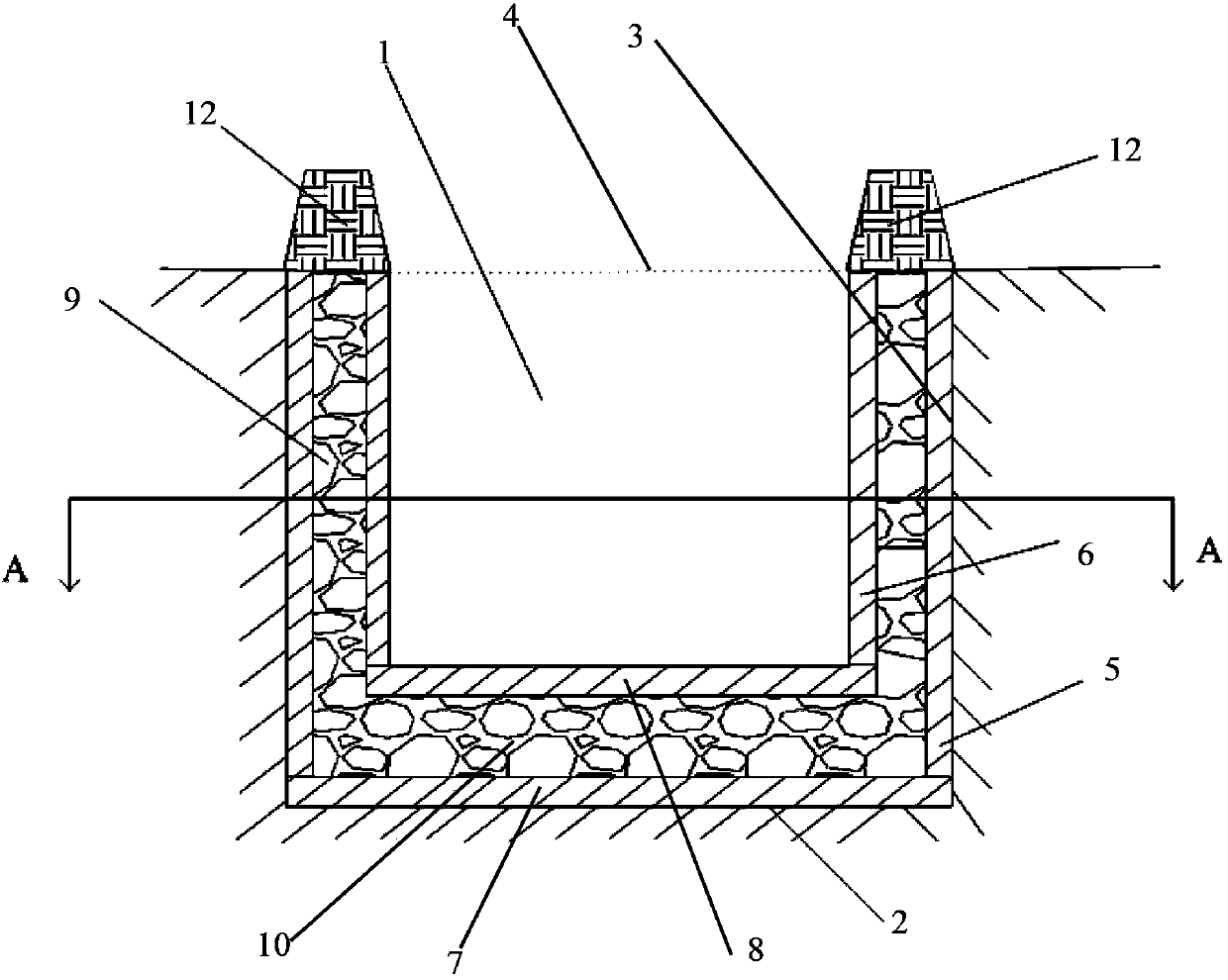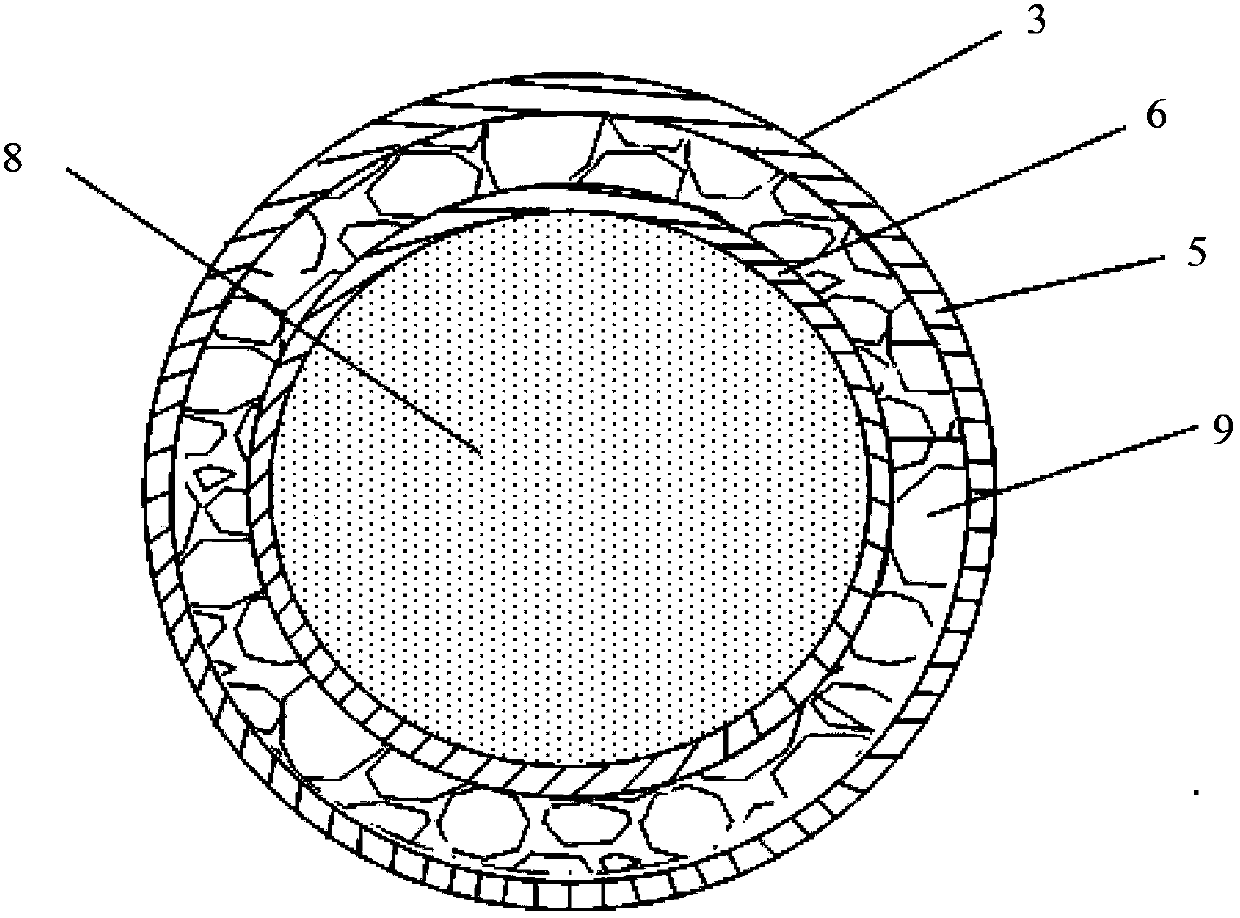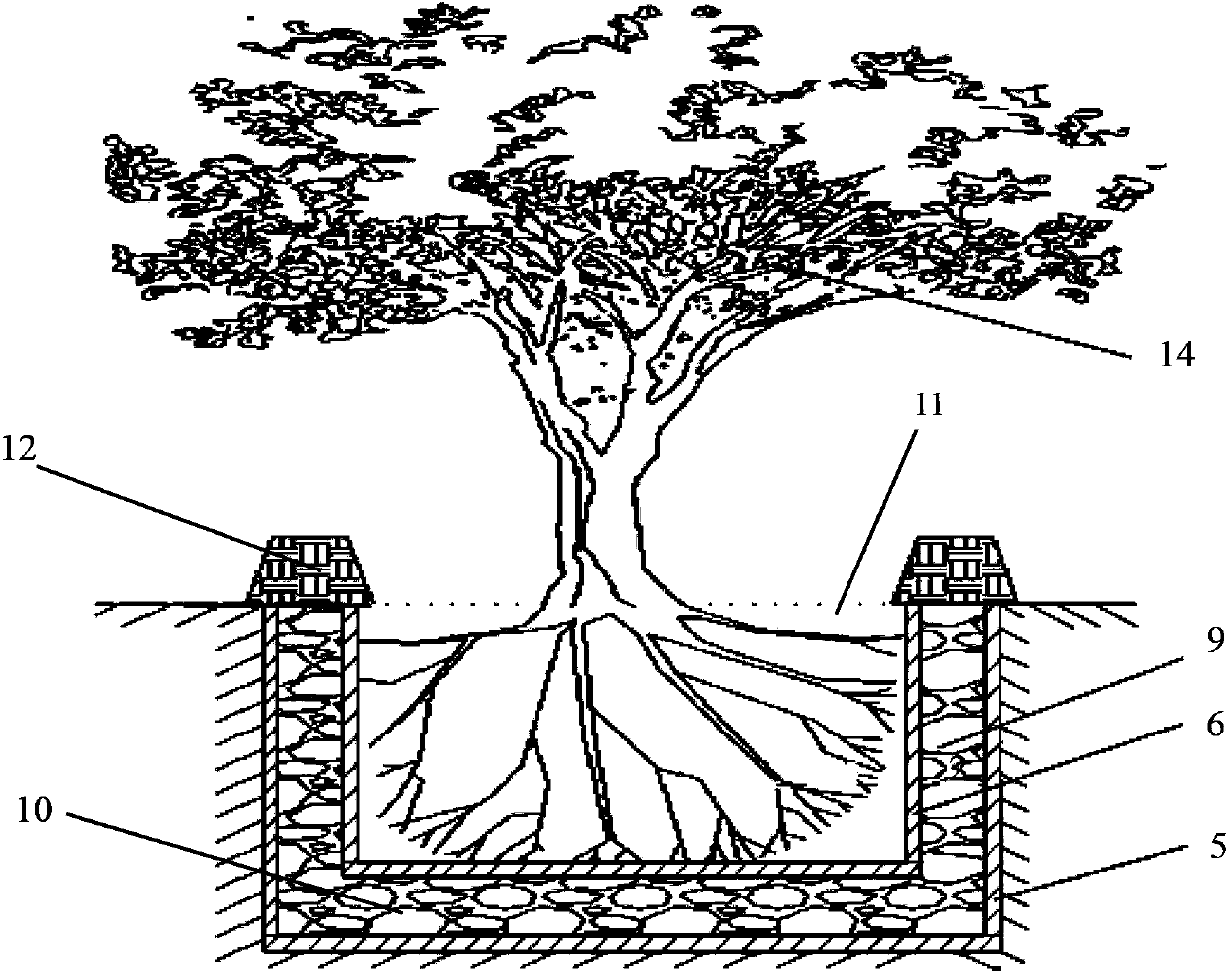Method for conducting afforestation on saline-alkali soil
A technology for saline-alkali land, agricultural and forestry waste, applied in afforestation, botanical equipment and methods, forestry, etc., can solve the problems of difficult saline-alkali land treatment, fragile ecosystem, poor resistance to diseases and insect pests, and natural disasters, and achieve the effect of absorbing water and salt Good effect, promoting root development and reducing improvement cost
- Summary
- Abstract
- Description
- Claims
- Application Information
AI Technical Summary
Problems solved by technology
Method used
Image
Examples
Embodiment 1
[0071] 1. Preparation of organic compost materials
[0072] Ferment and compost one or more of the landscaping waste (including dead branches, fallen leaves, grass clippings, flower rot, greening prunings and other organic substances in urban greening) to obtain organic compost materials for future use.
[0073] During the composting and fermentation process of organic waste such as landscaping waste, some of the substances that are easily decomposed by microorganisms are converted into stable humus substances, and the remaining lignocellulosic substances that are not easily decomposed can improve the permeability of the soil. The organic compost material prepared by composting fermentation can reduce the pH of alkalized soil, increase the content of soil organic matter, available phosphorus and available potassium, and increase the activity of soil microorganisms.
[0074] Described organic compost material is prepared according to the following steps:
[0075] A) Collect la...
Embodiment 2
[0101] Be 1.5cm except that the thickness of reed screen, width is 100cm; The diameter of the bottom surface 2 of planting pit is 120cm, and the depth of planting pit is 100cm; The thickness H of the bottom filter layer 10 that is set is 30cm; Reed screen is cut into width is The 70cm reed curtain block is rolled into a cylindrical reed curtain tube with a diameter of 100cm, placed in the middle of the planting pit to form the second inner wall isolation layer 6, and the distance between the second inner wall isolation layer 6 and the planting pit inner wall 3 is 10cm; The thickness h of the inner wall filter layer 9 is 10cm; the diameter of the matrix filling layer 11 is 100cm; the diameter of the second bottom isolation layer 8 is 100cm, and the thickness is 1.5cm; the volume ratio of organic compost material and saline-alkali soil is 1:7 Except, the others are the same as in Example 1.
[0102] In this embodiment, the survival rate of pagoda japonica (arbor) planted is 96%,...
Embodiment 3
[0105] Except that the width of the reed curtain is 110cm; the thickness H of the bottom filter layer 10 is 30cm; the reed curtain is cut into a length of 190-195cm and a width of 80cm after the reed curtain block is rolled into a cylindrical reed curtain tube with a diameter of 60cm. Place in the middle part of the planting pit to form the second inner wall isolation layer 6; the distance between the second inner wall isolation layer 6 and the planting pit inner wall 3 is 20cm; the diameter of the second inner wall isolation layer 6 is 60cm, and the width is 80cm; the depth of the plantation pit is 110cm, the thickness h of the filter layer 9 of the inner wall is 20cm; the volume ratio of the organic compost material and the original soil of the saline-alkali land is 1:3, and the rest are the same as in Example 1.
[0106] In this embodiment, the survival rate of pagoda japonica (arbor) planted is 94%, the preservation rate reaches 91%, and the growth rate of seedlings is fast...
PUM
| Property | Measurement | Unit |
|---|---|---|
| Granularity | aaaaa | aaaaa |
| Diameter | aaaaa | aaaaa |
| Depth | aaaaa | aaaaa |
Abstract
Description
Claims
Application Information
 Login to View More
Login to View More - R&D
- Intellectual Property
- Life Sciences
- Materials
- Tech Scout
- Unparalleled Data Quality
- Higher Quality Content
- 60% Fewer Hallucinations
Browse by: Latest US Patents, China's latest patents, Technical Efficacy Thesaurus, Application Domain, Technology Topic, Popular Technical Reports.
© 2025 PatSnap. All rights reserved.Legal|Privacy policy|Modern Slavery Act Transparency Statement|Sitemap|About US| Contact US: help@patsnap.com



